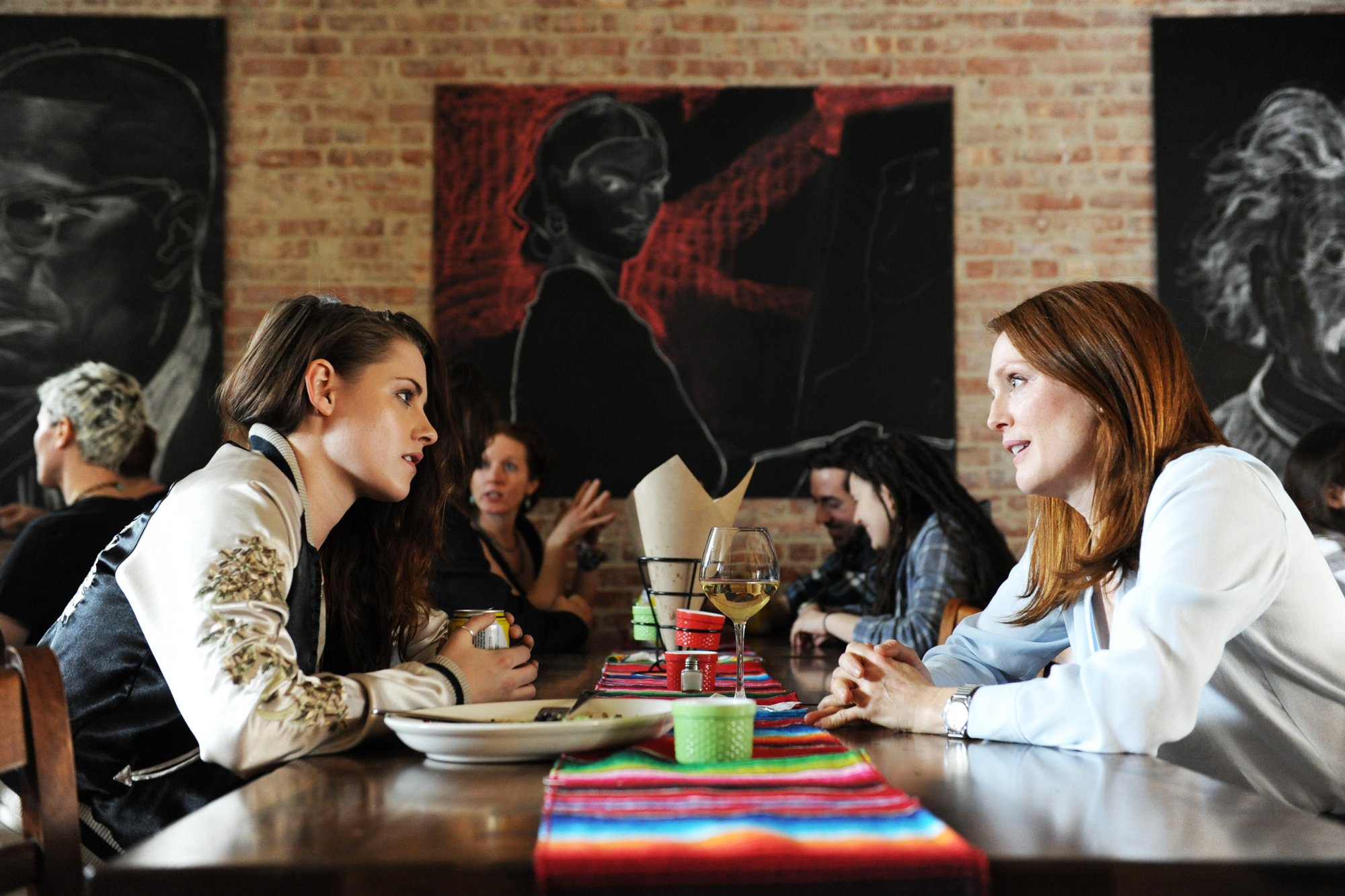Still Alice is a movie adapted from a best-selling novel by geneticist Lisa Genova about the effects of early-onset familial Alzheimer’s disease (eFAD), both on the victim herself and on the family growing around her. To many viewers, the idea of losing your marbles and your memories is as much a horror story as Night Of The Living Dead, maybe even more so since we all remember the impact of dementia on our own elderly relatives and see them reduced to a hollow shell of a human being – not unlike zombies.
The role of 50-year old Dr Alice Howland, for which Julianne Moore won a Best Actress Oscar, traces the steps from the character being a distinguished professor of linguistics at Colombia University, through subtle but mystifying changes in demeanour – forgetting words, feeling lost in familiar places, losing track of her arguments, forgetting her own daughter – to the final stages where a haggard Howland wears a beneficent smile but recognises nothing around her and can barely talk. Asked what a section of the play Angels In America is about she can only say “love” – at which poignant moment the camera gracefully bows out.
Like Alice before she loses her mind, many of us would want to be fed an overdose than suffer the indignities of needing constant support for even the most basic functions of self-care. We want to be strong and independent until we keel over, not live a lingering death with our powers gradually diminishing – a living death.
Along the way, we see the physical deterioration, the hair going its own way, the skin becoming sallow and wrinkly, the eyes becoming vacant and the life force draining from the body, but it is the loss of her mind and personality, not to mention her career, than strikes the killer blow. Lingering memories, with the children on the beach for example, become blurred and distant as the past becomes a strange and foreign land.
No question at all, Moore effects the transformation brilliantly, never more so than when she is lecturing to the Alzheimer’s Association by using a highlighter pen to ensure she does not repeat her words. Her delivery is jerky but the pathos unmistakeable, such that many a viewer would be drowning in floods of tears. She manages the transition with quiet dignity, only occasionally falling prey to fits of frustration, anger and emotional pain – like being unable to find the toilet in time. Nevertheless, she uses a variety of techniques to guide herself through the illness, demonstrating a resourcefulness that maybe some would lack.
But the effect on her family is where the real pathos lies. After all, Alice herself is not conscious of anything by the end, but her husband and three children must grieve for the loss of their mother as a caring and fully-functioning adult before her physical death. That is the worst case scenario, from which Alice wishes to spare her family the torment – which is why she makes a secret video to herself, hides pills and gives herself instructions on how to commit suicide. Alas, those plans are blown away when she is interrupted, instantly forgetting the plan. This reminded me of Guy Pearce‘s character writing himself notes in Memento, though the sadness lies in her inability to execute her own best-laid plans.
Husband Alex Baldwin has his own academic career, which ultimately takes him to the Mayo Clinic and which he uses as an excuse to mask his own inability to deal with losing Alice. It is left to their children to pick up the pieces and provide the caring, despite the appalling tragedy that each child has a 50% chance of inheriting early onset Alzheimers from Alice. Each makes their own decision: Tom (Hunter Parrish) takes the test and proves negative; Anna (Kate Bosworth) is positive, but her twin unborn babies are both negative; Lydia (Kristen Stewart), a brilliant aspiring actress, does not want to know.
Each has their own lives to lead, so the last thing they need is to put life on hold to deal with a terminal and irreversible condition in their mother. It is Lydia who postpones her career to care for the mother who now sees her as a kindly stranger. Doing one’s duty to our parents is a familiar responsibility, but arguably the most harrowing duty of all – when we become parents to our parents, all the worse when the parent in question is still in the prime of life and has yet to earn the right to grow senile.
In the face of this description, you might feel Still Alice is a brilliant and compassionate depiction of the most appalling illness by the joint writer-directors Richard Glatzer (RIP) and Wash Westmoreland. I’d like to agree but while the verité and empathy are beautifully played, somehow the downbeat telling loses some effect along the way. Somehow it has become a humdrum retelling, where your eyes wander and the grim inevitability does not hold your attention as effectively as it might.
This is a great shame and makes me wonder what is missing, since major emotional outpourings and fits of histrionics is certainly not the answer, any more than reducing the subtlety of Moore’s transformation of her character would improve the movie. Maybe the issue is that several stages of the change curve from denial en route for acceptance (AKA the Kübler-Ross model) appear to be missing, or are cut so short we only see a very abbreviated version in the 2-hour format. Granted that early-onset Alzheimers gets a rapid grip on its subject, but somehow we needed a stronger focus on how Howland fights her own internal battles before coming to terms with the illness – and the same process in her children too.
But the bulk of praise is certainly justified, with the proviso that some people will find it impossible to watch.
PS. If you read my blog Handedness, you’ll know about my internal debate about the complications of being left-handed and adopting a mixed-handed stance to survival in a right-handed world. In this context, Julianne Moore‘s performance in Still Alice is all the more fascinating: she writes left-handed but appears to do almost everything else right-handed, including chopping (understandable since most kitchen knives are designed to be used right-handed), using a computer track pad (as I do), and even using a highlighter pen.









